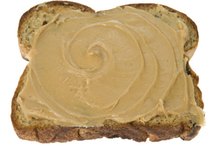What does fact checked mean?
At Healthfully, we strive to deliver objective content that is accurate and up-to-date. Our team periodically reviews articles in order to ensure content quality. The sources cited below consist of evidence from peer-reviewed journals, prominent medical organizations, academic associations, and government data.
- MedlinePlus: Magnesium in Diet
- National Institutes of Health: Magnesium
- Biological Trace Element Research: Serum, Iron, Zinc and Copper Concentration in Premature Graying of Hair
- Biological Trace Element Research: Serum, Iron, Zinc and Copper Concentration in Premature Graying of Hair
The information contained on this site is for informational purposes only, and should not be used as a substitute for the advice of a professional health care provider. Please check with the appropriate physician regarding health questions and concerns. Although we strive to deliver accurate and up-to-date information, no guarantee to that effect is made.
Is Gray Hair a Symptom of a Magnesium Deficiency?
Gray hair is a natural part of the aging process, occurring as your body produces less melanin, the pigment that gives your hair its color. After age 30, your chances of developing gray hair increases 10 percent to 20 percent every decade. Magnesium deficiency isn't a cause of gray hair, however, and gray hair isn't a symptom of low magnesium levels.
Magnesium and Your Body
An essential mineral, magnesium helps with more than 300 different chemical reactions in your body, including nerve and muscle functions. It's also crucial for a strong skeletal system, the maintenance of heartbeat, the regulation of blood sugar levels and healthy maintenance of your immune system. The recommended daily intake of magnesium is from 310 to 320 milligrams for adult women but is 350 to 400 milligrams for pregnant women and 310 to 360 milligrams for breastfeeding women. For men, the recommendation is 400 to 420 milligrams per day.
- An essential mineral, magnesium helps with more than 300 different chemical reactions in your body, including nerve and muscle functions.
- The recommended daily intake of magnesium is from 310 to 320 milligrams for adult women but is 350 to 400 milligrams for pregnant women and 310 to 360 milligrams for breastfeeding women.
Symptoms of Deficiency
Magnesium Deficiency Symptoms in Women
Learn More
While a magnesium deficiency is rare, if you lack magnesium, the first signs of a deficiency include excitability, weakened muscles and tiredness. Other early symptoms include:
- apathy
- confusion
- irritability
- insomnia
- memory loss or trouble retaining or learning new information
- confusion
- lowered appetite
If you continue to suffer from low magnesium levels, you may develop changes in your cardiovascular system, namely a quicker heart rate. In cases of severe deficiency, delirium and delusions may occur, as well as muscle contractions, numbness and tingling.
Dietary Sources of Magnesium
The majority of dietary magnesium comes from vegetables, especially dark, leafy greens, such as spinach, kale or collards. Other good sources of magnesium include avocados, bananas and dried apricots -- the dried fruits are higher in magnesium than the fresh ones -- and nuts, such as almonds and cashews. Legumes, seeds, whole grains and soy products are also rich in magnesium.
Gray Hair
Magnesium for Menopause
Learn More
In addition to age, your hair can turn gray as a result of other factors. Genetic predisposition — if your parents had gray hair early, you will likely develop gray hair at an earlier age — as well as hormones can play a role. External conditions, such as pollutants or toxins in your environment, the general climate and exposure to chemicals can also amplify the rate of graying. While you can't prevent hair from turning gray through diet — as you age, it will naturally lose its color — some mineral deficiencies can lead to gray hair. Scientists publishing in “Biological Trace Element Research” in April 2012 found that low copper levels appeared to contribute to premature graying 4. The study involved teenagers in Iran who experienced early graying, and the researchers state that further research is necessary, because the results aren't conclusive.
- In addition to age, your hair can turn gray as a result of other factors.
- Genetic predisposition — if your parents had gray hair early, you will likely develop gray hair at an earlier age — as well as hormones can play a role.
Related Articles
References
- The Library of Congress: Why Does Hair Turn Gray?
- MedlinePlus: Magnesium in Diet
- National Institutes of Health: Magnesium
- Biological Trace Element Research: Serum, Iron, Zinc and Copper Concentration in Premature Graying of Hair
- Rosanoff, A., Weaver, C. M., & Rude, R. K. (2012). Suboptimal magnesium status in the United States: are the health consequences underestimated?. Nutrition Reviews, 70(3), 153-164.
- Dupont, C., Campagne, A., & Constant, F. (2014). Efficacy and safety of a magnesium sulfateârich natural mineral water for patients with functional constipation. Clinical Gastroenterology and Hepatology, 12(8), 1280-1287.
- D'Angelo, E. K., Singer, H. A., & Rembold, C. M. (1992). Magnesium relaxes arterial smooth muscle by decreasing intracellular Ca2+ without changing intracellular Mg2+. The Journal of Clinical Investigation, 89(6), 1988-1994.
- Sojka, J. E. (1995). Magnesium supplementation and osteoporosis. Nutrition Reviews, 53(3), 71-74.
Writer Bio
Milton holds degrees from the University of Toronto, Ryerson University and the University of Guelph. A registered dietician, he is also an avid mountain and long-distance cyclist. His writing has appeared in Oxygen Magazine, Canadian Living, Vegetarian Foods and ALIVE.









